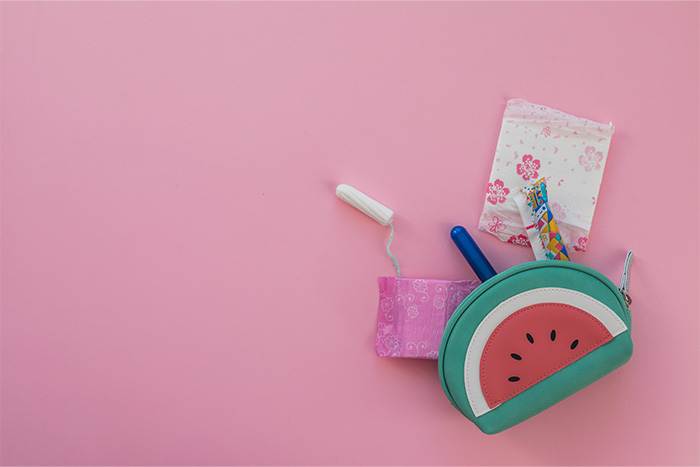Understanding Your First Period: Duration and Stabilization

Strong 8k brings an ultra-HD IPTV experience to your living room and your pocket.
The first period marks a significant milestone in every girl’s life, but it can be surrounded by uncertainty and confusion. One of the most common questions asked by young girls and their parents is, "How long does the first period last?" and "When will the cycle stabilize?" Understanding the basics of period time and what to expect during this transition can ease anxieties and help you manage expectations.
What Exactly is a First Period (Menarche)?
A girl's first period, or menarche, marks the official commencement of her menstrual cycle. It signifies the maturation of her reproductive system, indicating that her body is now capable of ovulation and potential pregnancy. This significant developmental milestone typically occurs within a wide age range, most commonly between 9 and 16 years old, though individual variations are entirely normal. The characteristics of the first period can differ considerably from one girl to another. It might manifest as very light spotting, barely noticeable, or it could present as a more substantial flow resembling a regular period. Both the "period time" (how long it lasts) and the "flow" (how heavy it is) are highly individual and will vary for each girl.
How Long Does the First Period Typically Last? Unraveling the Initial Experience
The duration of the very first period is a common point of curiosity and often a source of initial confusion. While there's a general range, it's crucial to understand that variability is the norm.
Generally, the first period can last anywhere between 3 to 7 days. However, several factors contribute to this duration:
Light Flow is a Common Hallmark: For many girls, the initial period is characterized by a very light flow, often described as spotting. This can sometimes make the period seem shorter than it actually is, as the amount of blood loss is minimal.
Heavier Bleeding: Also Within the Norm: Conversely, it's not unusual for the first period to be unexpectedly heavy. While this might be concerning, it typically doesn't extend the duration beyond a few days. The body is simply adjusting to the process of shedding the uterine lining for the first time.
Inherent Irregularity is Expected: It's absolutely vital to remember that the first few menstrual cycles, including the very first one, are frequently irregular. The body's intricate hormonal system is still learning to coordinate the complex interplay required for a regular cycle. This means some girls might experience a very short first period, while others might have one that extends beyond the typical 7-day window. Both scenarios are considered entirely normal during this initial adjustment phase.
What Happens During the First Period? A Guided Tour of the Experience
Navigating the first period can feel a bit overwhelming without prior knowledge. Here’s a breakdown of what typically occurs:
Vaginal Bleeding: The Primary Sign: The most obvious and defining characteristic of a period is the shedding of the uterine lining, which results in vaginal bleeding. This lining has built up in preparation for a potential pregnancy, and when no pregnancy occurs, it is shed.
Spotting Precedes Full Flow: Many girls experience a few days of light spotting before the actual "full flow" of their period begins. This pre-menstrual spotting is a normal precursor as the body prepares for the complete shedding of the uterine lining.
Menstrual Cramps: A Common Companion: Discomfort or cramping in the lower abdomen is a very common sensation during the first period, and indeed, during subsequent periods. These cramps are caused by the uterus contracting to help expel its lining. The intensity can range from mild aches to more noticeable discomfort.
Hormonal Fluctuations and Their Effects: The onset of menstruation is driven by significant hormonal shifts, particularly in estrogen and progesterone. These fluctuations can sometimes lead to noticeable changes, such as mood swings, heightened emotional sensitivity, or even minor skin breakouts like acne. These are temporary and typically subside as the hormones regulate.
How Long Does It Take for a Girl’s Period to Stabilize? The Journey to Regularity
Following the excitement and perhaps a little confusion of the first period, a common question arises: "When will my periods become regular?" It's important to set realistic expectations here, as cycle stabilization is a gradual process.
On average, it takes approximately 2 to 3 years for a girl's menstrual cycle to fully stabilize and establish a more predictable pattern. During this stabilization period, several characteristics are entirely normal:
Variable Cycle Lengths: One month, a girl might experience a shorter cycle (e.g., 21 days between periods), while the next month, it could be a longer one (e.g., 40 days). This fluctuation in cycle length is a hallmark of the early years.
Irregular Periods are the Norm: It's very common to experience irregular periods during this time. This can include skipping a month entirely, having two periods very close together, or having a period that lasts significantly longer than usual. These irregularities are not typically a cause for concern in the initial years.
Changing Menstrual Flow: The heaviness and characteristics of the menstrual flow can also vary during the stabilization phase. Some periods might be very light, while others could be heavier, and the flow might even change in consistency over time.
What is the Normal Cycle Length After Stabilization? The Rhythmic Predictability
Once the menstrual cycle has had ample time to stabilize, typically after the initial 2 to 3 years, most girls can expect to settle into a more predictable rhythm. The average normal cycle length after stabilization ranges from 21 to 35 days. This means that, generally, a period will occur approximately every 3 to 5 weeks. While the cycle length becomes more consistent, it's still possible for slight variations in flow intensity and duration from one month to the next, which is perfectly normal.
How to Track Your Period: Empowering Self-Awareness
To gain a better understanding of your own unique cycle and to manage potential discomfort more effectively, actively tracking your period is an incredibly helpful practice. This can be done using a dedicated period tracker app on a smartphone or simply by marking a calendar. Tracking your period provides numerous benefits:
Predict Your Next Period: Knowing approximately when your next period is due allows for better planning and preparation, whether it's packing sanitary products or scheduling activities.
Identify Irregularities and Changes: Consistent tracking helps to identify any significant or concerning irregularities that might warrant medical attention. It allows you to notice patterns and deviations from your personal norm.
Manage Discomfort Proactively: By understanding your cycle, you can anticipate when pre-menstrual symptoms like cramps or mood swings might occur, enabling you to prepare with pain relief, self-care, or simply by being gentle with yourself.
Common Concerns About the First Period: Addressing Apprehensions
While most aspects of the first period are normal and expected, it's natural to have concerns. Here are some common issues and when to consider seeking medical advice:
Pain and Discomfort: Mild to moderate menstrual cramps are very common. However, if cramps become severe, debilitating, or do not respond to over-the-counter pain relievers, it's important to consult a doctor to rule out any underlying conditions.
Heavy Bleeding: If bleeding is excessively heavy (e.g., soaking through more than one pad or tampon per hour for several hours, or lasting longer than 7 days), it's crucial to seek medical attention. Heavy bleeding can lead to anemia and may indicate an underlying issue.
Missed Periods: In the initial years after menarche, occasional missed periods or irregular cycles are usually normal as the body stabilizes. However, if periods are absent for several consecutive months after the initial stabilization period, or if there are concerns about overall health, consulting a healthcare provider is advised.
Mood Swings and Skin Breakouts: The hormonal fluctuations associated with the menstrual cycle can indeed cause mood swings, irritability, and acne. While these are usually temporary, if they are severe or significantly impact daily life, discussing them with a doctor or dermatologist can be beneficial.
Tips for Managing Your First Period: Embracing Comfort and Confidence
Navigating the first period, and indeed all subsequent periods, can be made significantly more comfortable and less stressful with a few practical tips:
Choose the Right Products for Your Flow: Experiment with different types and absorbencies of sanitary products to find what works best for you. This includes sanitary pads (available in various sizes and absorbencies to cater to light to heavy flow), tampons, and even menstrual cups. Products like Sofy sanitary pads offer a range of options designed for comfort and protection.
Prioritize Hydration and Nutrition: Maintaining a balanced diet rich in fruits, vegetables, and whole grains, along with ample hydration, can significantly help in managing menstrual discomfort. Certain foods can reduce inflammation, while adequate water intake can help with bloating.
Embrace Rest and Relaxation: Your body is undergoing significant hormonal and physical changes. Don't hesitate to prioritize rest and take it easy, especially on days when you feel more tired or experience discomfort. Gentle exercise, warm baths, or simply relaxing can be beneficial.
Consistent Cycle Tracking is Key: As mentioned, regularly tracking your period will empower you with knowledge about your body's patterns, helping you to anticipate and manage your period with greater peace of mind in the future.
Conclusion: Embracing This Natural Transition
The first period is a remarkable and unique milestone in every girl's life. It's essential to understand and internalize that irregular periods in the initial phase are not just common, but entirely normal, as the body requires time to adapt to its new hormonal landscape and establish its rhythm. By diligently tracking your cycle and selecting the appropriate sanitary products for your individual flow and comfort, such as the diverse range offered by Sofy sanitary pads, you can ensure a more comfortable, confident, and worry-free period experience.
Note: IndiBlogHub features both user-submitted and editorial content. We do not verify third-party contributions. Read our Disclaimer and Privacy Policyfor details.







